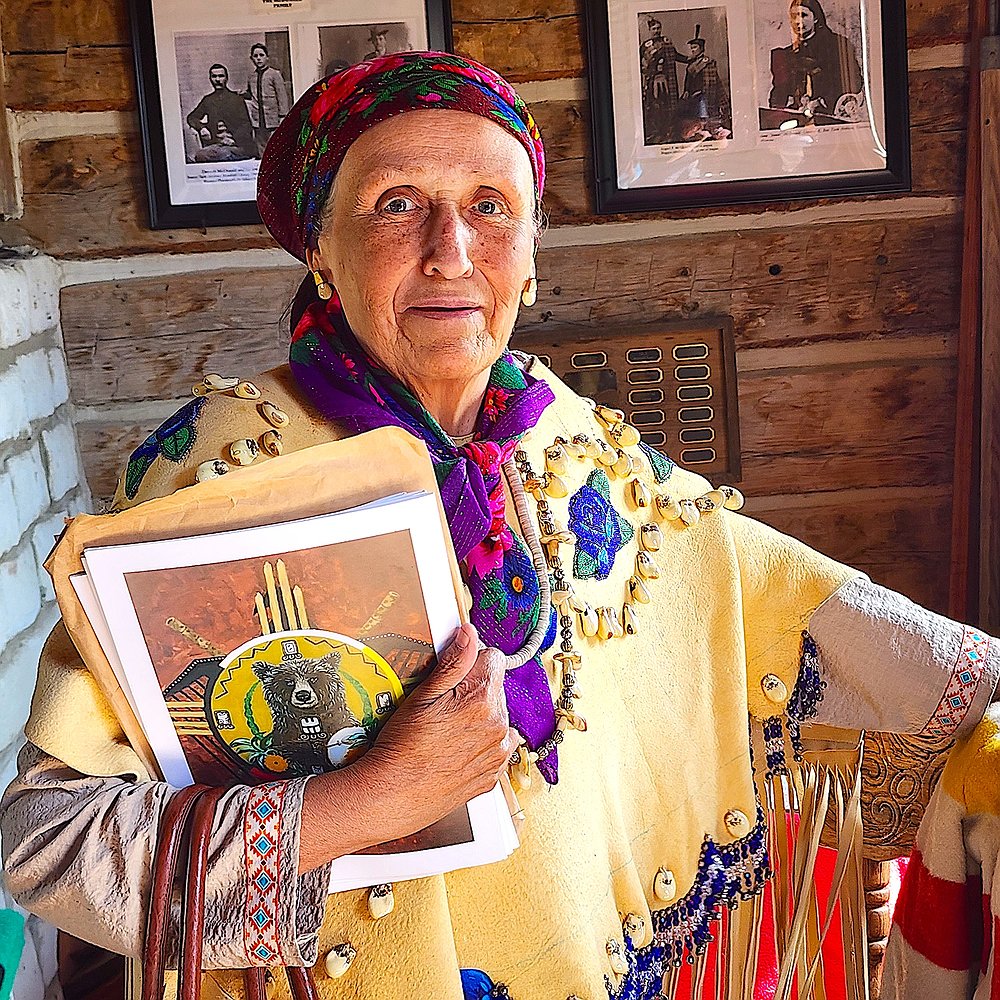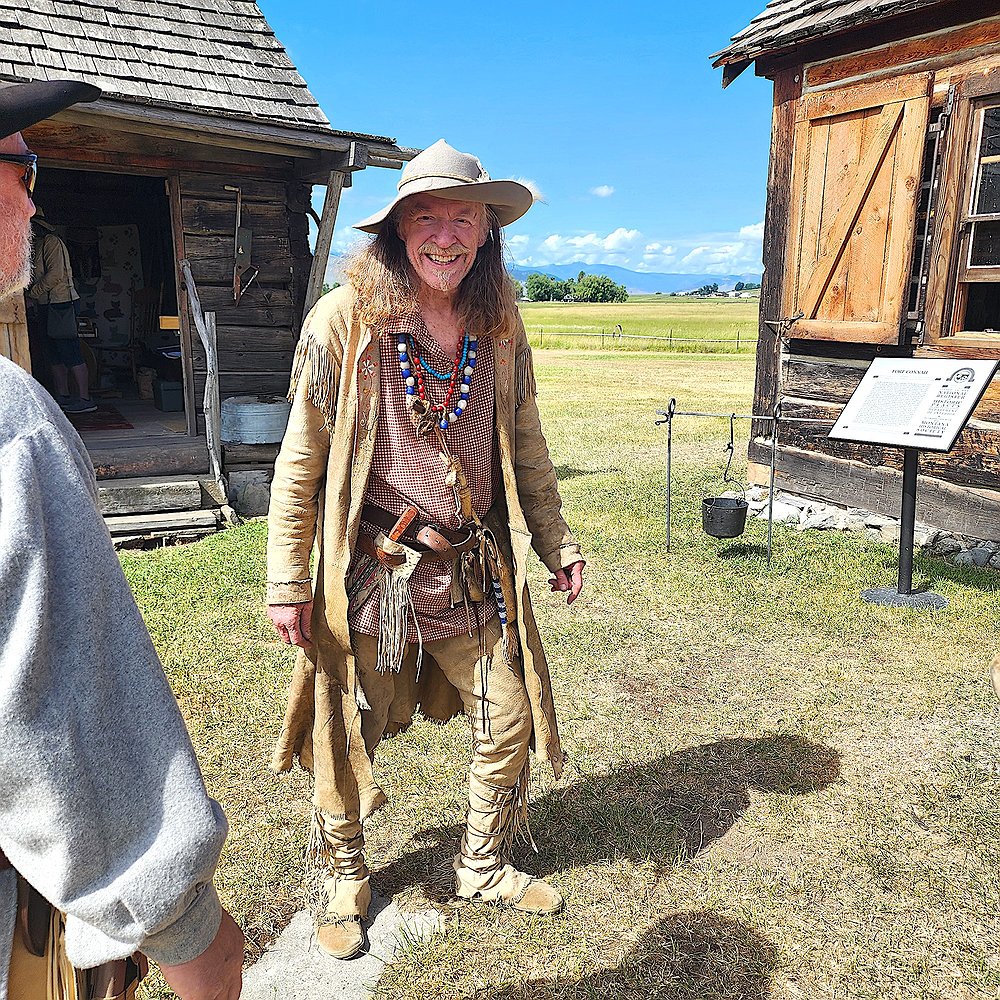Fort Connah Rendezvous is a step back in time
A trapper by the name of “Teaspoon” finished first in the annual Trapper’s Run – a contest of grit and physical stamina held during the 24th anniversary of the Fort Connah Rendezvous, June 14-15 at the historic outpost north of St. Ignatius.
Contestants ran three-quarters of a mile, vaulting onto the wooden “horse” and loading and firing a muzzleloader both forward and backward, carrying a bale of furs, and performing three other trapper-related skills.
The rendezvous also celebrated the 50th anniversary of the Fort Connah Restoration Society and its efforts to maintain and restore the oldest building in Montana, and the grounds around it. The event drew lots of visitors and vendors, including frybread maker Rachel Lopez, the “bakery lady” Tammy Steindorf, and spinner Linda Kittle.
This year the Restoration Society will be finishing the Angus P. McDonald homestead house, which will bring Fort Connah up to its original four buildings.
Maggie Goode, who is Angus P. McDonald’s great, great, great granddaughter, donated the building. Some of the logs were in tough shape so the society has replaced them.
Steindorf said a group of reenactors from the Northwest Fur Trade Historians from Spokane and Coeur d’Alene “were a great addition from a historic viewpoint.”
The historians dressed as they would have in 1807 when David Thompson first came to the territory now known as Montana. They made all their clothing and accoutrements, except flintlocks and muzzleloaders.
Mark Willoughby, a gunsmith with the historians, had weapons laid out in the historian’s trading post. A wizard with firearms, he also had advice for visitors interested in being a reenactor.
Willoughby’s tanned leather jacket had quillwork on the lapels and back. It also featured a flared knee-length bottom, copied from English fashion of the day. He made his breeches, leggings and moccasins, and his calico shirt was also handmade.
Artists such as George Catlin, Karl Bodner, Clark Dunbar, and Alfred Jacob Miller painted mountain men and Native Americans during the height of the fur-trading era so period clothing is often constructed using their art as an example. Museum displays also can be scrutinized for clothing ideas, Willoughby said.
Beaver trapper
Standing in front of his shelter beside a beaver hide stretched on a hoop was historian Mark Weadick. The beaver pelt came from a 63-pound beaver, “one of the biggest I ever trapped,” he said.
With a forestry degree from Purdue, he and his wife moved to Orofino, Idaho, in 1960. He had a forester friend who trapped, and Wedick began trapping to make extra money while holding down a full-time job. He was pretty much self-taught.
“I was going along streams with a headlamp on a lot,” he remembered.
Then the history of beaver trapping drew him in. Hudson Bay Company had come to Canada in the 1670s. Looking for men to trap beaver, HBC hired French/Iroquois men from eastern Canada to do the job.
With a line of credit from HBC, the trappers pretty much had to keep trapping to pay their bill to the company.
“The coin of the realm was a beaver pelt,” Weadick said.
The men trapped in groups of four or five and would talk it over, decide where they were going to trap, then move their families and set up camp. The men would set traps, usually six each, up and down the creek or river and return the next day and collect the trapped critter. They would skin the beaver quickly, saving some of “the good red meat,” and take the hides back to camp where the women and older children would flesh the hides and stretch them on willow hoops to dry.
The hides needed to dry thoroughly or the fur began to slip, Weadick said. They also needed to be flat so they were easy to put in a bale, which weighed around 90 pounds.
Weadick has a beaver trap which is an exact replica of a trap found in Montana. The trap and its chain weigh seven pounds, so if a trapper had six traps “that would be 42 pounds of weight on your horse” before you even mounted Weadick said.
Tipi painter
A couple of tipis with smoke marks on the flys were set up near the west fence of Fort Connah. One tipi had a handmade rack of rawhide parfleches hanging on it, painted in geometric designs in yellow, reds, blacks and greens, and created by Brian Deglow, from LaPine, Ore.
Parfleches were the suitcases of nomadic tribes and were made in many sizes. They could be stuffed with jerky, beading equipment, clothing, spare moccasins or hides. Usually square or pouch like, they tied shut with leather thongs and were an easy shape to pack on a horse — think saddle bags of many sizes.
When the tipi was set up, parfleches could be stacked, serve as a headboard to lean against or as “canisters” in the kitchen area.
DeGlow also made his tipi. It has a liner made of buffalo hides stitched together, which he brain-tanned himself. Inside was a gallery, with paintings of Nez Perce horses running on the walls and wide lines of bar beading providing a horizon.
On the floor were painted, tanned buffalo robes. One is a copy of the Grand Robe, which hangs in the Metropolitan Museum of Art and follows the lives of two Lakota warriors and their companions.
DeGlow also copied a robe painted by Mato-Tope, a Mandan chief, in 1835. The robe depicts all the exploits of his life, particularly the fights, and the original hangs in the Bern Art Museum in Switzerland.
Using natural earth pigments, DeGlow makes his own paints using red and yellow ochre, charcoal, and pond scum. Ingredients need to be dried out and powdery to mix well with animal fat. He gathers lots of pigment when he can and loves to paint.
He always loved living outdoors, but a friend of DeGlow’s actually lived in a tipi in Alaska. He visited a tipi maker in central Oregon, and “I was sold,” he said.
Folks who attend the Fort Connah Rendezvous were also “sold” on the history they absorbed and the fun they had before David Sturman and his workhorses Pete and Pal delivered them back to their vehicles.
Learn more about the efforts of the Fort Connah Restoration Society at fortconnah.com.







